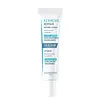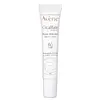What's inside
What's inside
 Key Ingredients
Key Ingredients

 Benefits
Benefits

 Concerns
Concerns

 Ingredients Side-by-side
Ingredients Side-by-side

Ricinus Communis Seed Oil
MaskingBis-Diglyceryl Polyacyladipate-2
EmollientParaffinum Liquidum
EmollientGlycerin
HumectantIsopropyl Palmitate
EmollientHydrogenated Vegetable Oil
EmollientCetearyl Ethylhexanoate
EmollientHydrogenated Polyisobutene
EmollientPolyethylene
AbrasiveVp/Hexadecene Copolymer
Beeswax
Emulsion StabilisingHydrogenated Castor Oil
Emollient10-Hydroxydecenoic Acid
Skin ConditioningDisteardimonium Hectorite
StabilisingGlyceryl Linoleate
EmollientGlyceryl Linolenate
EmollientGlyceryl Oleate
EmollientGlyceryl Palmitate
EmollientGlyceryl Stearate
EmollientGlycine Soja Oil
EmollientIsopropyl Myristate
EmollientTocopherol
AntioxidantTocopheryl Acetate
AntioxidantWater
Skin ConditioningRicinus Communis Seed Oil, Bis-Diglyceryl Polyacyladipate-2, Paraffinum Liquidum, Glycerin, Isopropyl Palmitate, Hydrogenated Vegetable Oil, Cetearyl Ethylhexanoate, Hydrogenated Polyisobutene, Polyethylene, Vp/Hexadecene Copolymer, Beeswax, Hydrogenated Castor Oil, 10-Hydroxydecenoic Acid, Disteardimonium Hectorite, Glyceryl Linoleate, Glyceryl Linolenate, Glyceryl Oleate, Glyceryl Palmitate, Glyceryl Stearate, Glycine Soja Oil, Isopropyl Myristate, Tocopherol, Tocopheryl Acetate, Water
Glycerin
HumectantRicinus Communis Seed Oil
MaskingWater
Skin ConditioningBeeswax
Emulsion StabilisingCaprylic/Capric Triglyceride
MaskingParaffinum Liquidum
EmollientBis-Diglyceryl Polyacyladipate-2
EmollientIsopropyl Palmitate
EmollientHydrogenated Castor Oil
EmollientHydrogenated Polyisobutene
EmollientPEG-45/Dodecyl Glycol Copolymer
Emulsion StabilisingAluminum Sucrose Octasulfate
Skin ConditioningZinc Oxide
Cosmetic ColorantMagnesium Sulfate
Zinc Sulfate
AntimicrobialGlycerin, Ricinus Communis Seed Oil, Water, Beeswax, Caprylic/Capric Triglyceride, Paraffinum Liquidum, Bis-Diglyceryl Polyacyladipate-2, Isopropyl Palmitate, Hydrogenated Castor Oil, Hydrogenated Polyisobutene, PEG-45/Dodecyl Glycol Copolymer, Aluminum Sucrose Octasulfate, Zinc Oxide, Magnesium Sulfate, Zinc Sulfate
 Reviews
Reviews

Ingredients Explained
These ingredients are found in both products.
Ingredients higher up in an ingredient list are typically present in a larger amount.
Beeswax is natural wax produced by honey bees and can be synthetically created. It consists mainly of fatty acid esters and long-chain alcohols.
In cosmetics, beeswax is a emollient. Due to its waxy structure, it creates a protective barrier. This barrier prevents water from evaporating off the skin.
This may not be a good ingredient for oily skin. We recommend speaking with a professional if you have concerns.
Beeswax cannot be removed with water, but can be taken off with an oil cleanser.
Beeswax is also antiseptic and contains vitamin A.
Learn more about BeeswaxThis ingredient is lipid-based synthetic skin-conditioning agent derived from adipic acid and a mixture of fatty acids. It is often called a lanolin substitute.
As an emollient, it helps soften and hydrate the skin. Emollients create a barrier on the skin to trap moisture in.
Due to its fatty acid base, it may not be Malassezia folliculitis safe.
Learn more about Bis-Diglyceryl Polyacyladipate-2Glycerin is already naturally found in your skin. It helps moisturize and protect your skin.
A study from 2016 found glycerin to be more effective as a humectant than AHAs and hyaluronic acid.
As a humectant, it helps the skin stay hydrated by pulling moisture to your skin. The low molecular weight of glycerin allows it to pull moisture into the deeper layers of your skin.
Hydrated skin improves your skin barrier; Your skin barrier helps protect against irritants and bacteria.
Glycerin has also been found to have antimicrobial and antiviral properties. Due to these properties, glycerin is often used in wound and burn treatments.
In cosmetics, glycerin is usually derived from plants such as soybean or palm. However, it can also be sourced from animals, such as tallow or animal fat.
This ingredient is organic, colorless, odorless, and non-toxic.
Glycerin is the name for this ingredient in American English. British English uses Glycerol/Glycerine.
Learn more about GlycerinHydrogenated Castor Oil is created by adding hydrogen to castor oil. This helps stabilize the castor oil and raises the melting point. At room temperature, hydrogenated castor oil is solid.
Castor Oil helps moisturize the skin. It is rich in a fatty acid called ricinoleic acid. This fatty acid helps prevent moisture loss on the skin. This helps keep your skin soft and hydrated. Ricinoleic acid also has anti-inflammatory and pain reducing properties.
As a wax-like substance, Hydrogenated Castor Oil acts as an emollient. Emollients help keep your skin stay soft and smooth by creating a barrier. This barrier helps trap moisture.
Hydrogenated Castor Oil may not be fungal-acne safe. We recommend speaking with a professional.
Learn more about Hydrogenated Castor OilHydrogenated Polyisobutene is a synthetic polymer. Polymers are compounds with high molecular weight. Hydrogenated Polyisobutene is an emollient and texture enhancer.
In one study, Hydrogenated Polyisobutene showed better skin hydration levels than Caprylic/Capric Triglyceride. As an emollient, it helps keep your skin soft and hydrated by trapping moisture in.
Hydrogenated Polyisobutene is often used as a mineral oil replacement.
Learn more about Hydrogenated PolyisobuteneIsopropyl Palmitate is a texture enhancer and emollient. It is an ester of isopropyl alcohol and palmitic acid.
Palmitates are emollients. Emollients help keep your skin soft and smooth by creating a barrier that traps moisture in.
When added to cosmetics, Isopropyl Palmitate creates a silky texture and improves spreadability.
Isopropyl Palmitate may not be fungal acne safe. It can worsen acne prone skin.
Learn more about Isopropyl PalmitateParaffinum Liquidum is also known as liquid paraffin. It is a type of highly refined mineral oil.
Like other oils, Paraffinum Liquidum has emollient properties. Emollients help soothe and soften the skin. By creating a barrier to trap moisture within, emollients help keep your skin hydrated.
Paraffinum Liquidum does not irritate the skin and is non-comedogenic.
Learn more about Paraffinum LiquidumRicinus Communis Seed Oil is the INCI name for castor oil.
Castor Oil helps moisturize the skin. It is rich in a fatty acid called ricinoleic acid. This fatty acid helps prevent moisture loss on the skin. This helps keep your skin soft and hydrated. Ricinoleic acid also has anti-inflammatory and pain reducing properties.
Besides hydrating the skin, castor oil is also used to hydrate hair. By keeping the hair shaft moisturized, breakage is decreased. More studies are needed to show castor oil's effective on stimulating hair growth.
Castor oil is created by cold-pressing castor seeds and then purifying the oil with heat. It was used in Ancient Egypt as fuel in lamps and to help treat eye irritation.
The term 'fragrance' is not regulated in many countries. In many cases, it is up to the brand to define this term. For instance, many brands choose to label themselves as "fragrance-free" because they are not using synthetic fragrances. However, their products may still contain ingredients such as essential oils that are considered a fragrance.
Learn more about Ricinus Communis Seed OilWater. It's the most common cosmetic ingredient of all. You'll usually see it at the top of ingredient lists, meaning that it makes up the largest part of the product.
So why is it so popular? Water most often acts as a solvent - this means that it helps dissolve other ingredients into the formulation.
You'll also recognize water as that liquid we all need to stay alive. If you see this, drink a glass of water. Stay hydrated!
Learn more about Water